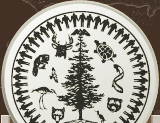History & Culture


Oka Crisis of 1990
Reprinted from Wikipedia
http://en.wikipedia.org/w/index.php?title=Oka_Crisis&oldid=96501366  | Warrior and Canadian Solider in 1990.
|
The Oka Crisis was a land dispute between the Mohawk nation and the town of Oka, Quebec which began on March 11, 1990, and lasted until September 26, 1990. It resulted in three deaths, and would be the first of a number of well-publicised violent conflicts between Indigenous people and the Canadian Government in the late 20th century.The crisis developed from a dispute between the town of Oka and the Mohawk community of Kanesatake. For 260 years, the Mohawk nation had been pursuing a land claim which included a burial ground and a sacred grove of pine trees near Kanesatake, which is one of the oldest hand-planted stands in North America, created by the Mohawks’ ancestors. This brought them into conflict with the town of Oka, which was developing plans to expand a golf course onto the disputed land. In 1717, the governor of New France granted the lands encompassing the cemetery and the pines to a Catholic seminary permission to hold the land in trust for the Mohawk nation. The Church expanded this agreement to grant themselves sole ownership of the land, and proceeded to sell off the Mohawk peoples' land and timber. In 1868, one year after Confederation, the chief of the Oka Mohawk people, Joseph Onasakenrat, wrote a letter to the Church condemning them for illegally holding their land and demanding its return. The petition was ignored. In 1869, Onasakenrat returned with a small armed force of Mohawks and gave the missionaries eight days to return the land. The missionaries called in the police, who imprisoned the Mohawks. In 1936, the seminary sold the remaining territory and vacated the area. These sales were also protested vociferously by the Mohawks, but the protests produced no results. In 1961, a nine-hole golf course, le Club de golf d'Oka, was built on land claimed by the Mohawk People, who launched a legal protest against construction. Yet, by the time the case was heard, much of the land had already been cleared and construction had begun on a parking lot and golf greens adjacent to the Mohawk cemetery. In 1977, the band filed an official land claim with the federal Office of Native Claims regarding the land. The claim was accepted for filing, and funds were provided for additional research of the claim. Nine years later, the claim was finally rejected for failing to meet key criteria. Immediate Causes
The mayor of Oka, Jean Ouellette, announced in 1989 that the remainder of the pines would be cleared to expand the members-only golf club's course to eighteen holes. Sixty luxury condominiums were also planned to be built in a section of the pines. The town of Oka stood to make money from the expansion and Mayor Ouellette was a member of the private club that stood to benefit most. However, none of these plans were made in consultation with the Mohawks. As a protest against a court decision which allowed the golf course construction to proceed, some members of the Mohawk community erected a barricade blocking access to the area in question. Mayor Ouellette demanded compliance with the court order, but the protestors refused. Quebec's Minister for Native Affairs John Ciaccia wrote a letter of support for the natives, stating that “these people have seen their lands disappear without having been consulted or compensated, and that, in my opinion, is unfair and unjust, especially over a golf course.” Crisis
Despite the letter, the mayor asked the Sûreté du Québec to intervene on July 11, citing Mohawk criminal activity around the barricade. The Mohawk people, in accordance with the Constitution of the Iroquois Confederacy, asked the women, the caretakers of the land and progenitors of the nation, whether or not the arsenal they had amassed should remain. The women decreed that the weapons should be used only if the Sûreté du Québec opened fire first. A police SWAT team swiftly attacked the barricade deploying tear gas canisters and flash bang grenades in an attempt to create confusion in the Mohawk ranks. It is unclear whether the police or Mohawks opened fire with gunshots first, but after a thirty-second firefight the police fell back, abandoning six cruisers and a bulldozer. During the gun battle, 31-year-old Corporal Marcel Lemay of the Sûreté du Québec was shot in the mouth and died a short while later. After the funeral a few days later, the SQ and the Mohawks lowered their flags to half-mast. The Mohawks sent condolences but refused to accept responsibility for the death, blaming Mayor Ouellette for ordering the armed assault on the blockade. The situation escalated as the local Mohawks were joined by natives from across Canada and the United States. The natives refused to dismantle their barricade and the Sûreté du Québec established their own blockades to restrict access to Oka and Kanesatake. Other Mohawks at Kahnawake, in solidarity with the Kanesatake Mohawks, blockaded the Mercier Bridge between the Island of Montreal and the South Shore suburbs at the point where it passed through their territory. At the peak of the crisis, the Mercier Bridge and highways 132<


|



